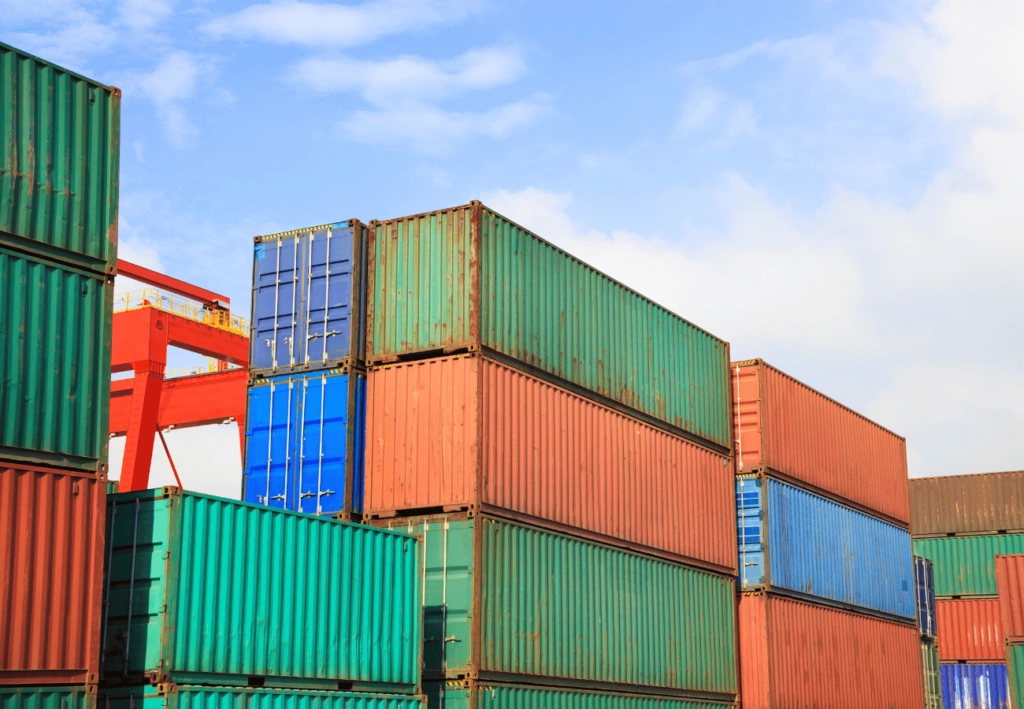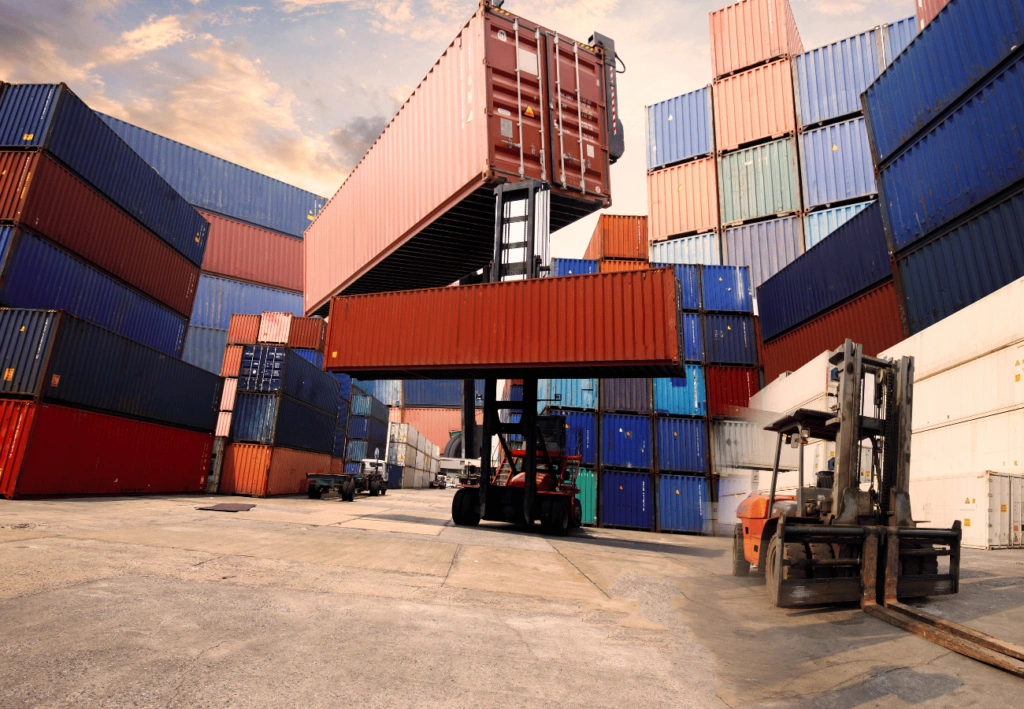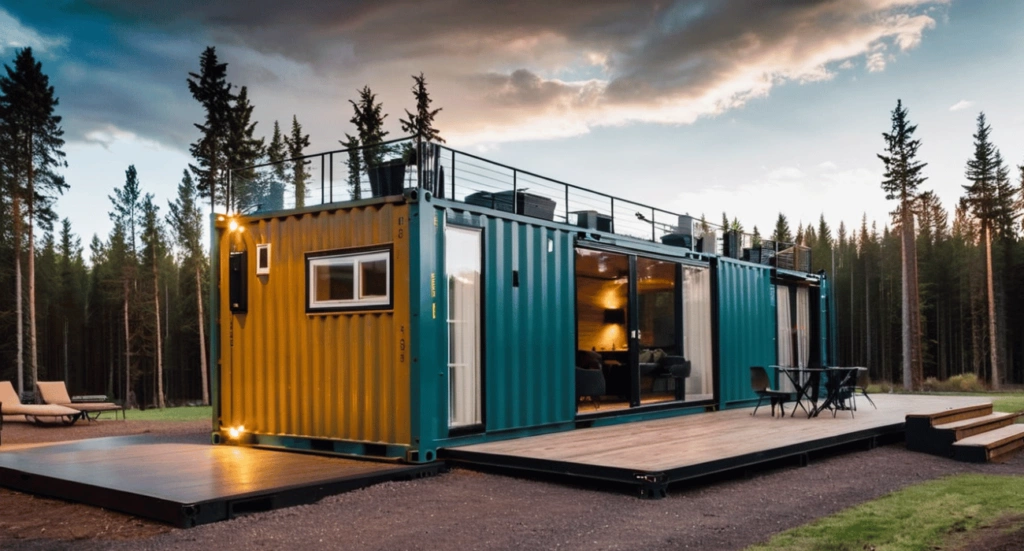In the bustling city of Toronto, the trend of utilizing used shipping containers for a variety of purposes is on the rise. From innovative housing projects to unique pop-up shops, the adaptability of these steel boxes is capturing the imagination of entrepreneurs, homeowners, and creative minds alike. Used shipping containers for sale offer a sustainable, cost-effective, and versatile solution for a myriad of applications. Let’s delve into the world of used shipping containers, providing you with essential information, tips, and considerations to help you make an informed decision on your next big project.
Understanding Shipping Containers
The concept of shipping containers was born out of the need for efficient and secure transport of goods globally. These corten steel containers are engineered for durability, designed to withstand harsh sea conditions, and are ideal for storing and transporting a wide range of cargo. The standardized sizes and build of shipping containers, primarily the 20′ Standard, 40′ Standard, and 40′ High Cube, have not only revolutionized the shipping industry but also paved the way for innovative architectural and storage solutions on land.

Why Choose Used Shipping Containers?
Environmental Benefits: Opting for a used shipping container contributes to reducing the carbon footprint associated with producing new steel structures. By repurposing containers, you participate in a circular economy, giving new life to what might otherwise be considered waste.
Cost-Effectiveness: Pre-owned shipping containers offer a cost-effective alternative when contrasted with new ones. These savings can be substantial, affording flexibility in budgeting for tailored adjustments to meet your precise requirements.
Unique Character: Every pre-owned container holds its individual history and visual appeal. This distinctiveness imbues character and narrative into your endeavor, whether it be a charming backyard workspace or a cutting-edge retail setting.
Types of Used Shipping Containers Available
When exploring used shipping containers for sale in Toronto, understanding the types available is crucial. The most common types include:
- 20′ Standard Container: Ideal for small-scale projects, personal storage, or compact living spaces, offering a balance between space and manageability.
- 40′ Standard Container: Provides ample space for larger projects, such as commercial spaces, workshops, or spacious homes.
- 40′ High Cube Container: With an additional foot in height compared to the standard, these containers offer extra volume, perfect for applications requiring taller interior space, such as art studios or industrial storage.
Each type serves different needs, and your choice should align with your project’s requirements and the space available at your site.
Condition Grades of Used Shipping Containers
When diving into the market of used shipping containers for sale, it’s crucial to understand the grading system that categorizes the containers based on their condition. This grading helps potential buyers gauge what to expect in terms of aesthetics and functionality. The primary grades include:
- One Trip: Often considered the cream of the crop in used containers, “one-trip” containers have been used for a single cargo load. They exhibit minimal wear and tear, making them almost indistinguishable from new containers. Ideal for modifications requiring a pristine condition.
- Cargo Worthy (CWO): These containers are still in condition to be used for shipping goods internationally. They have been inspected and carry a certification to prove their seaworthiness. While they might show signs of wear, they are structurally sound.
- Wind & Water Tight (WWT): As the name suggests, these containers are weatherproof and can protect contents from the elements but may not be certified for shipping cargo. They are suitable for storage or projects where the aesthetic condition is less critical.
- IICL (Institute of International Container Lessors): This grade is used by leasing companies and denotes containers that meet strict criteria for shipping. Though not commonly found in the consumer market, they represent a high standard of maintenance and condition.

Choosing the right grade depends on your project’s requirements and budget. For example, a “one-trip” container might be preferable for a home conversion project where aesthetics are paramount, while a “WWT” grade might suffice for a rugged storage solution.
Certification and Trust
Purchasing a used shipping container involves a significant investment, hence the importance of dealing with a reputable and trustworthy supplier.
Prices and What to Expect
The cost of used shipping containers for sale can vary widely based on factors such as the container’s size, condition, and the current market demand. While specific prices are subject to change, understanding these factors can help you budget more effectively for your project:
- Size and Grade: Larger containers and those in better condition (e.g., “one-trip”) typically command higher prices.
- Supply and Demand: Fluctuations in the global shipping industry can affect container availability and pricing.
- Delivery Costs: Consider the logistics of getting the container to your site, as delivery charges can significantly impact the overall cost.
Prospective buyers should request detailed quotes from suppliers, including all associated costs, to avoid any surprises.
Delivery Information and Preparation
Receiving a shipping container delivery at your site requires some preparation and understanding of the delivery process. Here are key points to consider:
- Site Accessibility: Ensure that the delivery site is accessible for the delivery truck and that there’s enough space for the container to be placed.
- Ground Preparation: The ground should be level and prepared to support the weight of the container. Using a foundation or supports can prevent settling and make the container level.
- Delivery Equipment: Familiarize yourself with the type of delivery truck being used (e.g., tilt-bed, flatbed) and ensure there’s adequate space for maneuvering and offloading the container.

How to Purchase a Used Shipping Container
Navigating the process of purchasing a used shipping container can seem daunting at first. However, by following a structured approach, you can simplify the process and ensure you make a well-informed decision. Here’s a step-by-step guide to help you through:
- Determine Your Needs: Clearly define what you intend to use the container for. Consider factors such as shipping container size, condition, and any modifications you plan to make. This will guide your search and help you communicate your requirements to sellers.
- Research Reputable Sellers: Focus on finding sellers with a good reputation, like those certified by the BIC (Bureau of International Containers). Storage-Tech, for instance, offers a wide range of options and transparent information.
- Request Quotes: Contact multiple sellers to get used shipping container quotes. Be sure to ask about the condition of the container, delivery charges, and any additional fees. Compare these quotes carefully.
- Inspect the Container (If Possible): If you’re able to, inspect the container in person before finalizing the purchase. This allows you to assess its condition firsthand. For remote purchases, request detailed photos or a video tour.
- Arrange for Delivery: Once you’ve made your choice, coordinate with the seller for the delivery of the container. Ensure that your site is prepared and that you understand the delivery process.
- Finalize Purchase: Complete any necessary paperwork and make the payment to finalize the purchase. Ensure you receive a receipt and any relevant warranty or certification documents.
Customizing Your Used Shipping Container
One of the most appealing aspects of used shipping containers is their versatility. With some creativity and planning, they can be transformed into almost anything. Here are a few ideas and considerations for customizing your container:
- Home and Office Spaces: Containers can be converted into comfortable living spaces or efficient offices. Consider insulation, windows, doors, and electrical installations to make the space habitable.
- Retail and Pop-Up Shops: Their portability makes shipping containers ideal for retail businesses. Custom paint jobs, branding, and interior fittings can create an inviting space for customers.
- Workshops and Studios: For artists, craftsmen, or DIY enthusiasts, containers offer a robust and secure workspace. Customize the interior with workbenches, storage, and lighting to suit your craft.
When planning your customization, always consult with professionals, especially for structural modifications or installations that require compliance with local building codes.

Comparison: Used Shipping Containers vs. PODS
When considering storage or project space solutions, it’s useful to compare used shipping containers with other options like PODS. Here are key differences:
- Durability and Security: Shipping containers are made from corrosion-resistant steel, offering superior durability and security compared to the mostly aluminum and plastic construction of PODS.
- Size and Customization: Shipping containers typically offer more space and are easier to customize for a wide range of uses, from homes to commercial spaces.
- Cost-Effectiveness: While initial costs may vary, the long-term durability and versatility of shipping containers often provide better value for money.
Caring for Your Used Shipping Container
To ensure your used shipping container continues to serve you well, regular maintenance is key. Here are some tips:
- Rust Prevention: Inspect your container regularly for signs of rust. Treat any rust spots immediately with rust inhibitors and repaint the affected area.
- Weatherproofing: Ensure doors and seals are intact to keep the interior dry and protected from the elements. Regularly check and clear drainage holes to prevent water accumulation.
- Foundation Maintenance: If your container is set on a foundation, check it periodically to ensure it remains level and stable, adjusting as necessary.
Conclusion
Used shipping containers for sale in Toronto offer a unique combination of affordability, durability, and versatility. Whether you’re planning a custom home, an innovative business space, or simply need secure storage, a used shipping container can be an excellent choice. By understanding the types, conditions, and customization options available, and following best practices for purchase and maintenance, you can unlock the full potential of these remarkable structures.
Ready to explore the possibilities of used shipping containers? Contact
Contact our team for further details or to explore our wide-ranging inventory.
This thorough guide strives to furnish you with the insight and assurance needed to commence your shipping container endeavor. With the appropriate strategy, your vision can transform into a sustainable, practical, and distinctive actuality.
External Links for Further Reading:
- Bureau International des Containers (BIC)
- Shipping Container Home Builders Guide
- Sustainable Architecture: Shipping Container Homes
Remember, each used shipping container carries its own story and potential. It’s up to you to unlock it.
Frequently Asked Questions (FAQs) About Used Shipping Containers for Sale
What should I look for when buying a used shipping container?
When purchasing a used shipping container, consider the following factors:
- Condition Grade: Understand the grading system (One Trip, CWO, WWT, IICL) to choose a container that meets your needs.
- Structural Integrity: Check for any significant dents, rust, or damage that could affect the container’s strength and usability.
- Doors and Seals: Ensure doors open and close smoothly and that seals are intact to prevent water ingress.
- Certification: Particularly for shipping purposes, ensure the container is certified and meets international shipping standards.
Can I inspect a used shipping container before purchasing?
Indeed, it’s strongly advised. Examining the container enables you to evaluate its condition and suitability for your project directly. If an in-person inspection isn’t feasible, ask the seller for comprehensive photos or a video presentation.
How much does a used shipping container cost?
The cost of a used shipping container can vary widely depending on factors like size, condition, current market demand, and delivery fees. On average, prices can range from a few thousand dollars for a basic WWT grade container to more for a One Trip condition container. Always request a comprehensive quote that includes delivery costs.
How are used shipping containers delivered?
Used shipping containers are typically delivered using one of three methods:
- Tilt-bed Trucks: Ideal for easy offloading, as the bed tilts to slide the container into place.
- Flatbed Trucks: Requires a crane or forklift at the delivery site for offloading.
- Roll-off Trucks: Similar to tilt-bed but designed for heavier containers.
Ensure your site is accessible and prepared for the delivery method chosen.
Can I customize a used shipping container?
Certainly! Repurposed shipping containers offer remarkable versatility, adaptable to an array of applications such as residences, offices, cafes, and workshops. Typical modifications involve incorporating insulation, windows, doors, and electrical setups. Prioritize consultation with experts, particularly for structural alterations, to uphold safety standards and adherence to local regulations.
Do I need a permit to place a used shipping container on my property?
Permit requirements vary by location and intended use. A permit may not be necessary for residential storage purposes. However, if you’re converting a container into a living space or using it for commercial purposes, you’ll likely need to comply with local zoning laws and building codes. It’s essential to check with your local planning department before purchasing.
How long do used shipping containers last?
Through adequate upkeep, a previously owned shipping container can endure for 25 years or beyond. Variables impacting its lifespan encompass its initial state upon acquisition, the environmental conditions it encounters, and consistent maintenance efforts aimed at averting rust and weather-related deterioration.
Are used shipping containers environmentally friendly?
Yes, purchasing a used shipping container is an environmentally friendly choice. Reusing containers reduces the demand for new steel production, contributing to recycling efforts and the circular economy. Furthermore, their durability and adaptability for multiple uses make them a sustainable option for construction and storage.
Can used shipping containers withstand harsh weather?
Used shipping containers are designed to endure extreme conditions at sea, This enhances their ability to withstand severe weather conditions such as heavy rainfall, snow, and strong winds. Maintaining intact doors and seals further bolsters their resistance to the elements.
How do I maintain a used shipping container?
Routine upkeep can prolong the lifespan of your pre-owned shipping container. Essential steps include:
- Promptly inspecting and addressing any rust spots.
- Verifying that door hinges and seals are operational to maintain weather resistance.
- Positioning the container on a flat surface to prevent deformation and aid in effective drainage.



